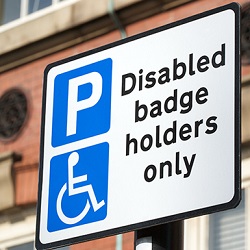The inns of court are slow to act on behalf of disabled barristers and the Bar Standards Board (BSB) is to set push them to improve access in listed buildings, an event to mark the launch of the Bar’s Disability Taskforce heard last week.
Taskforce member Christina Warner, a barrister at 33 Bedford Row, who has significant sight loss from macular degeneration, said a “massive issue” was the inns of court’s tendency to “shy away” from anything to do with disability, such as annual disability events, although some inns were better than others.
“It really is difficult to get any events off the ground. It takes a lot of work [and] often ends up with individuals having to take the lead on what is a huge task to put on an event to celebrate those with disabilities,” she said.
She urged that “more needs to be done”, perhaps by the BSB.
Fellow member, Doughty Street Chambers barrister Mark Henderson, who became wheelchair-bound in 2018 and sits on the Bar Council’s disability panel, said that his transformation into somebody unable to walk had overnight made him unable to access his office without assistance.
He explained how “half the struggle is to persuade chambers and courts and everyone in the legal system that what they are required to do [make reasonable adjustments as required by the Equality Act 2010] is a matter of legal and professional duty and not something that is an aspiration or something that would be nice if they could spare the resources”.
His own chambers had been unable to obtain the necessary consents to install a lift so he could have independent access.
Mr Henderson expressed concern that this pointed to the impossibility of enabling a wheelchair user who happened to win pupillage “to move around anywhere much beyond the conference rooms in a traditional old-fashioned building”.
Diane Lightfoot, chief executive of the government-backed Business Disability Forum and a member of the taskforce, said it was quite possible, if not cheap, to achieve tastefully done reasonable adjustments in keeping with listed buildings.
“There are lots of studies that show that these things are possible [although trying to] retrofit accessibility is something like 100 times more expensive than designing it in. I suspect they might be underestimating it in terms of some of the legacy old buildings we’re looking at.”
From the audience, Wilf White, the BSB’s director of communication and public engagement, observed that he was a warden of a grade 1 listed church in Suffolk which had installed disabled access with the full support of English Heritage.
He pointed out that many barristers’ chambers were ultimately owned by the inns of court.
Later when asked by Legal Futures whether the BSB had talked to the inns on this issue and whether the BSB was pressing them on encouraging adaptations to chambers in listed buildings, he said: “The simple answer is ‘not yet’, but we will be talking to them about this issue.”















Leave a Comment